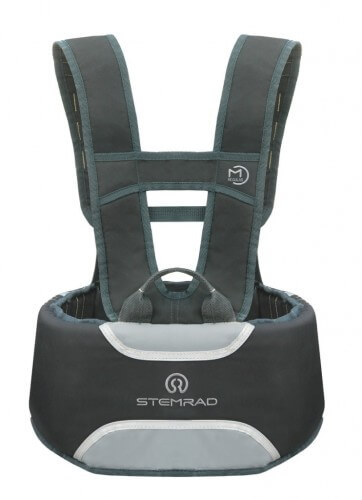The vest is designed to provide optimal protection for the bone marrow in the wearer's stem cells, in case of exposure to radiation

The Israeli companies StemRad and Lockheed Martin, a global technology leader, have begun a joint research and development process with the aim of determining whether StemRad's radiation protection technology - which was originally developed for first responders in emergencies - could protect astronauts on deep space exploration missions. This is part of Lockheed Martin's ongoing effort to create international cooperation for manned deep space flights.
The StemRad company, located in Tel Aviv and Palo Alto, California, develops personal protective equipment against the harmful effects of ionizing radiation. The company works with militaries, nuclear energy providers and government agencies to provide solutions for first responders who will be required to handle radioactive material radiation incidents and save lives.
As currently designed, StemRad's 360 Gamma is a wearable vest that protects first responders and emergency responders from dangerous gamma radiation. The vest provides optimal protection for the wearer's bone marrow in stem cells, which is essential to prevent harmful complications that can arise from exposure to radiation.
Lockheed Martin is the main contractor in the construction of Orion, NASA's next-generation spacecraft designed to fly humans to destinations beyond orbits around the Earth and return them safely home. By providing radiation protection during extended missions in deep space, a successful fit of StemRad's commercial 360 gamma may be the key component to ensuring the health and safety of astronauts.
The joint project has received the support of an interstate research committee and will be assisted by grants from Space Florida, the agency for economic development in the fields of aviation and space of the state of Florida in the USA and the Israeli Industry Center for Research and Development (MatimOp) in the Office of the Chief Scientist at the Ministry of Economy in Israel.
"We are going to take our extensive knowledge of manned spaceflight, apply our engineering expertise in nanomaterials, and work closely with StemRad to test the viability of this deep space radiation protection solution," said Randy Sweet, director of business development for civil space programs at Lockheed. Martin. "The team of Lockheed Martin believes that this could be an innovative solution to improve the safety of the crew on the journey to Mars."
Dr. Oren Milstein, one of the founders and chief scientist of StemRad stated that "We are excited to collaborate with Lockheed Martin in this important project. Our team has advanced capabilities in the fields of radiation biology and innovative radiation protection strategies, and we will now utilize these skills for the unique challenges of manned spaceflight."

One response
It's all lead underwear with sheets because of the weight. You don't need to be a world leader in technology to develop it, you need a seamstress. Every x-ray technician has such a lead apron. But it is convenient for the American government to invest several hundred million dollars to measure performance that can be calculated in five minutes with a slide rule, and to find that depleted uranium is 2% better than lead but also 2% heavier than lead.